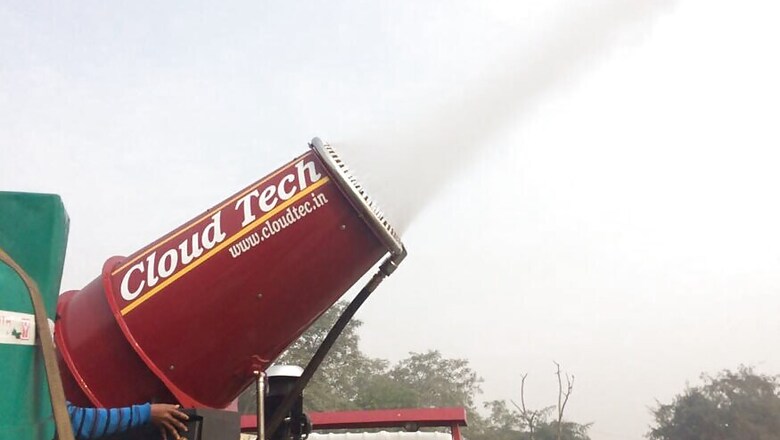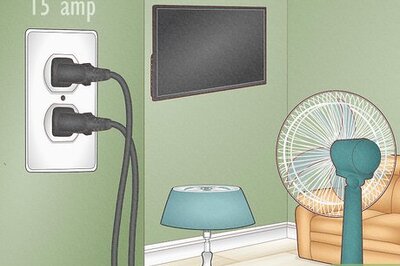
views
New Delhi: Fog put a damper on the day long trial of India's first 'anti-smog gun’, held at Delhi's Anand Vihar Bus Terminal, Tuesday. The mist cannon was being tried out in one of Delhi's consistently severely polluted spots to see if it could work as a contingency plan in case of smog.
However, by evening, the director of the Delhi Pollution Control Committee (DPCC), Dr. Dipankar Saha told News18, “we could not see any impact on air quality as we’ve been struggling with fog all day."
Commuters at the Anand Vihar Bus Terminal were treated to an unusual sight 10 am in the morning. The gun, made of a large, red cannon, connected to a water tank, atop a lorry, started shooting a spray of water some 30 metres into the air from 10 am, while a gaggle of reporters and camerapersons ran around trying not to get drenched.
However, officials in the DPCC were less than enthusiastic about this latest piece of technology thought up to lower Delhi’s pollution levels. Such a machine could not be used to clean an urban area like Delhi. At best, for localised results, it could be used for water sprinkling during industrial activities or when the city organises a sports match.
The Delhi government had drawn much flak when smog hindered Sri Lankan cricket players during a match, earlier this month.
Anand Vihar, consistently one of Delhi’s most polluted spot, was chosen for the a day long trial, to see if this machine could bring down the pollution levels -- in the severe category in the morning -- at all. If so, it could be rolled out on the city’s streets soon enough, said Delhi’s environment minister Imran Hussain.
“The idea came about in a series of meetings, where even helicopters sprinkling water on the city were suggested," he told News18.
The idea of using helicopters never saw the light of day once it came to light that such equipment wasn’t possible. This gun, however, had international precedents. It has been used in China and in Mexico to combat smog, and could possibly be deployed in Delhi’s worst areas.
The machine, explained a representative from Cloud Tech, the company that built it, mimics rain like conditions. It shoots fine water droplets into the air to combine them with dust particles and particulate matter, which then settles them down. Depending on the size of the gun and the water tank, it can shoot water anywhere from 30 to 100 metres. This makes it a highly water intensive machine, needing 30 litres per minute for a range of 30 metres.
However, Delhi's environment minister Imran Hussain said they will figure out the gun's water needs, if it proves to be practical. He stayed mum on the cost of the machine, and the number they would procure, saying it all depended on how the trial went on Tuesday.
Officials with the Delhi Pollution Control Committee told News18 that water treated at sewage treatment plants (STPs) was one feasible option. They added that they were still deciding on the mechanics of it all -- what situations, what levels of pollutions and what areas could one break out the anti-smog gun in.
The non performance of the mist cannon only adds to Delhi's poor track record with large scale mechanical solutions. Unless you can clean the entire air mass of the city, said one senior officer, you’re not going to see results. You have to work at the micro and the macro level, he added.
The idea of helicopters, too, never took off, as equipping birds with such machines wasn’t possible. Officials with the Environment Pollution (Prevention and Control) Authority (EPCA) had told News18 that helicopters couldn’t be used to sprinkle water the way Delhi needed, they were mostly used to produce jets of water that douse fires. Mechanical sweepers have hit the roads very haltingly, as most of Delhi’s roads were smooth enough for the ones built initially for Commonwealth Game stadiums.
Six mechanical sweepers were flagged off in July this year, with more procured in the subsequent months.















Comments
0 comment